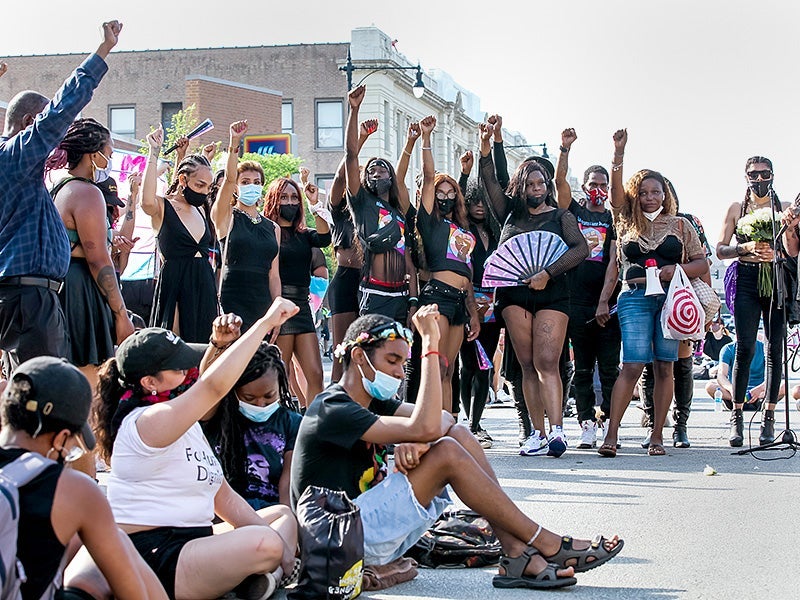Why Queer Liberation Is an Environmental Justice Issue
Once we stop seeing these fights for humanity as separate, we open ourselves up to the possibility of learning from each other in deeper ways.

This page was published 4 years ago. Find the latest on Earthjustice’s work.
The first Pride march was the anniversary of the Stonewall riot led by Black and Latinx trans and gender non-confirming individuals against police brutality. This rebellion was part of many riots against state-sanctioned raids of LGBTQ+ bars. Even today, for every victory we have that ensures our rights, there are so many people who are not here to celebrate with us, and another right that’s being taken away. This is true in the fight for queer liberation, for racial justice, for Indigenous sovereignty, disability justice, and for climate justice. When we start to pull on the roots of “environmental justice” by looking to the 17 Principles of Environmental Justice the emerged from the First National People of Color Environmental Leadership Summit in 1991, we see a longstanding recognition of how environmental justice must “encompass mutual respect and justice for all peoples, free from any form of discrimination or bias”.
Indeed, these struggles against oppression are indivisible from each other. “The people who are going to be most impacted by climate change are our people,” says Lindi von Mutius, a board member at Out4Sustainability. “They’re queer Brown people. They’re Brown people. They’re queer people. They’re poor people. And when you look statistically at who experiences poverty in this country, in the LGBTQ community, it’s trans people. Our trans brothers and sisters are going to be the ones excluded from emergency disaster relief. They’re the ones who are going to face violence. So asking questions like, ‘How is climate change going to hurt our communities specifically?’ has become so important.”
And as we remember the powerful movement for justice that Pride today relies on, we must center the lives and vision of Black trans women and Black trans femmes. The Transgender Law Center says, “We want a world where Black Trans Women & Black Trans Femmes are thriving and leading solutions for social, economic, and political change… Collective liberation requires not just policy & legal change but the shifting of hearts and attitudes about the value of Black trans lives.” What changes do we need to make to our power structures for this to be true? What would it feel like for all our communities to uphold this vision?
Once we stop seeing these fights for humanity as separate, we open ourselves up to the possibility of learning from each other in deeper ways. At a 2020 rally, Dr. Angela Davis said, “If we want an intersectional perspective, the trans community is showing us the way. The trans community has taught us to challenge that which is perceived to be normal. If we can challenge the gender binary, we can challenge prisons.”
Mass incarceration uniquely affects queer Black and Latinx communities, as Black and Latinx “queer youth are overrepresented in the juvenile justice system… [and] queer adults are overrepresented in prison and jail.” Organizations like TGI Justice Project recognize that the fight for queer survival and freedom must be paired with advocacy and support for incarcerated queers, because these fights are one and the same.
And when you start to recognize that prisons are often built on environmental hazard sites such as coal ash dumps, it becomes very clear that one single issue has many, many layers of oppression. The fight for queer rights is often interwoven with the fight for justice for the earth and its people.
Originally published in June 2020. Updated in June 2021.